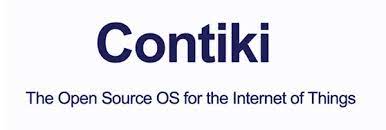
Contiki is an open-source operating system specifically designed for internet of things devices such as low-power microcontrollers, wireless sensors, and networking devices. Contiki is a lightweight operating system with multitasking capabilities. It differs from other operating systems in that it includes communication components such as uIP and 6LoWPAN. Contiki is a popular option due to its unique features, such as being lightweight and flexible for IoT devices.
Contiki uses fewer kilobytes and can modify an entire operating system. It is a device that connects tiny microcontrollers to the internet. It is a powerful source for developing comprehensive wireless systems.
Table of Contents
Components of Contiki communication
- uIP – uIP is also referred to as micro IP. Because of their limited resources, low power iot devices are unable to implement TCP/IP protocols. MicroIP is designed for 8 and 16 bit microcontrollers and contains minimized components that are essential for the TCP/IP stack.
- uIPv6: It allows for IPv6 networking. The Contiki now has new internet communication capabilities thanks to uIPv6. It expands the address space. It is compatible with IoT devices such as sensors.
- Rime: The rime communication stack provides a collection of lightweight communication primitives that are ideally used by sensors. This networking is intended for use with low-cost wireless systems.
- 6LoWPAN: It was created in order to apply the internet protocol to low-power internet of things devices. 6LoWPAN enables low-power devices with limited processing capabilities to participate in IoT. It possesses ideal market characteristics such as smart homes, sensors, and actuators.
- CoAP: The CoAP protocol is a web transfer protocol. In the Internet of Things, we can use it with constrained nodes and networks. Traditional protocols are too large for memory-constrained devices, so CoAP became necessary.
- RPL: RPL is an IPv6 routing protocol designed for lossy and low-power networks.
Contiki IoT Functions
- Memory and process administration
Contiki supports the malloc function, which is used in standard C programming memory allocation (). It aids in the allocation of memory blocks. “Protothreads” satisfies the requirements of a low-level system. They are written in C and help to reduce the overhead of multithreading programming.
- Management of communication
Contiki supports both the IPv6 and IPV4 stacks. The TCP, UD, and HTTP protocols are examples of primitives. Contiki operating systems also enable low-power implementations like the 6LoWPAN.
- File system administration
Every IoT device may not have a large and long-lasting memory storage, such as flashes. Contiki’s coffee file system enables such devices. It is intended for devices that have an external flash memory chip.
Loading modules dynamically
Contiki supports the dynamic loading of programming modules to make programming easier. There are two programming interfaces for loading a program: ELF (executable linkable format) and native executable format.
Using the coffee file system, the dynamic module can be written to flash memory.
Simulator of the Cooja network
A network simulator known as the Cooja network simulator is included in the Contiki systems. It stimulates networks on Contiki-supporting nodes. The Contiki programming model includes prototypes for remotely running a small memory system. Prototypes are memory-efficient programs with multithreading for low memory overhead.
Contiki OS IoT Application
Contiki OS includes several applications that are part of the operating system. Lightweight browsers, lightweight web servers, shells, calculators, telnet to remotely manage devices, email clients and users, vnc viewer, and ftp are examples.
Developers can use tools like the cooja simulator to create an application. In Contiki, we can measure the power of various applications, which can help developers create power-sensitive applications.
A UNIX-style shell is also included in the software package for OS interface and debugging.
Conclusion
So, we learned about the Contiki operating system and a few of its applications and functionality in this article. The cooja network simulator, dynamic module loading, and the Contiki communication components are all covered. We hope that our explanation was clear.

